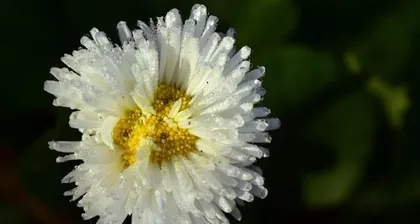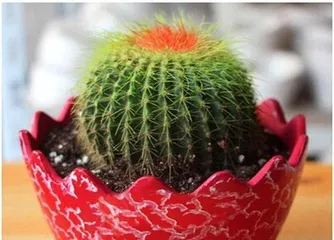Cacti are common succulents with unique shapes and beautiful flowers, making them very popular. However, to ensure cacti grow healthy and bloom beautifully, some cultivation techniques are required. This article will provide a detailed introduction to the cultivation methods and precautions for cacti, helping you easily become a cactus expert.

Understanding the Basic Characteristics of Cacti
Cacti are succulents belonging to the Cactaceae family. They are mostly spherical or cylindrical, with some sharp spines or hairs on their surface, giving them a unique appearance. Some cacti also produce beautiful flowers that are irresistible.
Choosing the Right Variety
When buying a cactus, pay attention to choosing a variety that suits your cultivation environment and skill level. Generally, beginners can choose some easy-to-care-for varieties, such as globular cacti or stemmed cacti. If you have some experience and skills, you can try some more special varieties.

Preparing the Cultivation Soil
Cacti need soil that is loose, breathable, and well-draining. You can mix materials such as leaf mold, perlite, and sand in a certain proportion to make cultivation soil. At the same time, note that soil with too much fertilizer should not be used, as it will affect plant growth.
Choosing the Right Lighting Environment
Cacti like environments with plenty of light and are dry. When cultivating at home, you can choose a sunny window, or choose a sunny, well-ventilated location outdoors. However, be aware that during the hot summer, cacti need to avoid direct sunlight, otherwise it will damage the plant.
Mastering the Proper Watering Method
Cacti are drought-tolerant plants and do not need frequent watering. Generally, you need to wait for the soil to be completely dry before watering each time. Keep it dry in winter, watering only once a week. During the hot summer, the frequency of watering can be appropriately increased.

Controlling Temperature and Humidity
The optimal temperature for cactus growth is 18°C-28°C. In winter, the indoor temperature should be kept above 5°C, otherwise the cactus is susceptible to frost damage. In addition, pay attention to controlling indoor humidity to avoid excessive humidity leading to plant diseases and pests.
Fertilizing
Cacti are plants that do not need frequent fertilization. Usually, fertilize once a month during the growing period. You can use diluted inorganic fertilizers or organic fertilizers for fertilization, but be careful not to use too much, otherwise it will affect plant growth.
Propagation Techniques
Cacti can be propagated by cuttings, division, seeds, etc. Among them, cuttings and division are more common methods. When propagating by cuttings, you can insert the cactus branches into moist sandy soil, and they will take root and germinate in about two weeks. Division is to separate the side buds of the cactus for independent growth.
Avoiding Damage and Pests
Cacti are relatively drought-tolerant, heat-tolerant, and cold-tolerant, but they are threatened by various injuries and pests. Avoid damaging the cactus by cutting, squeezing, etc., and at the same time, regularly check whether the plant is infested by pests and diseases.
Preventing Aphids
Cacti are susceptible to aphid infestations, so pay attention to preventing them. Methods such as sulfur fumigation and spraying insecticides can be used for prevention and control. However, note that the insecticides used should not harm the plant.
Avoiding Root Rot
Cacti are susceptible to root rot, so pay attention to avoiding overwatering and high humidity. At the same time, if you find that the plant has been affected by root rot, you can move the plant to a well-ventilated, temperature-appropriate environment and wait for it to recover naturally.
Pay Attention to the Timing of Repotting
Cacti need to be repotted once a year, usually in spring. When repotting, pay attention to choosing the right potting soil, the roots of the plant must not be damaged, and pay attention to maintaining the growth direction and posture of the plant.
How to Induce Flowering
Cactus flowering requires certain conditions, such as sufficient light, suitable temperature and humidity, etc. If you want the cactus to flower, you can induce flowering by controlling these environmental conditions.
Properly Handling the Dormancy Period of Cacti
Cacti have a dormancy period, during which the plant's growth will pause, and watering and fertilization should be appropriately reduced. During this period, pay attention to keeping the indoor environment dry and ventilated to avoid the plant being affected by mold, rot and other problems.
In summary, the cultivation method of cacti is relatively simple, but it also requires certain skills and precautions. Only by mastering these cultivation techniques can cacti grow healthily and produce beautiful flowers. I hope this article can be helpful to everyone and become a cactus expert!